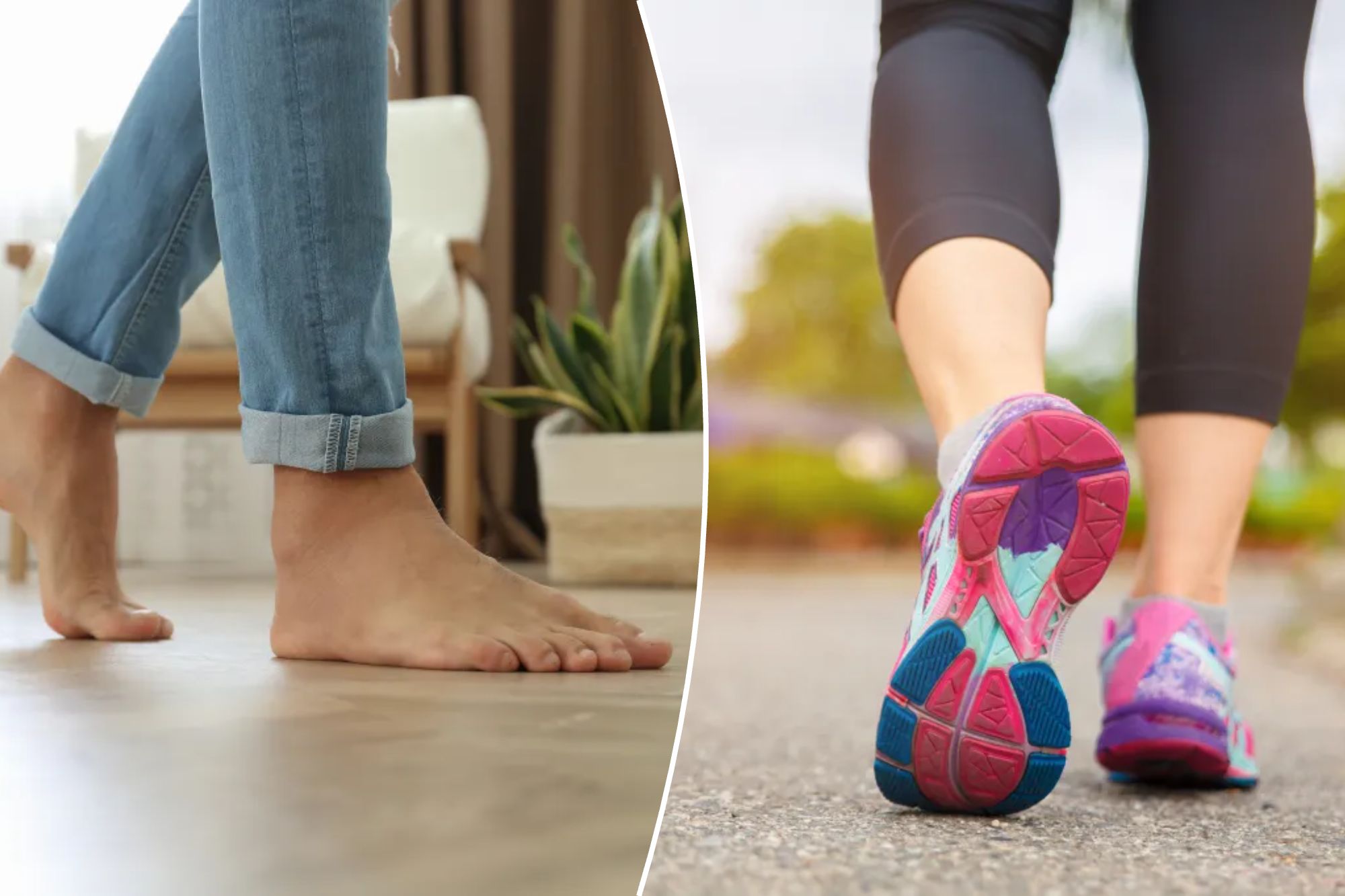
Shoes out, dogs out – barefoot walking can simply be the natural remedy you miss.
While most of us are used to throwing our shoes on the beach, experts say there are unexpected health benefits to do the same in our daily routines.
“I’m a big lawyer to go barefoot at home,” told Huffpost Dr. Robert Connello, a licensed clinical podiatricist.
He explained that the main benefit is to strengthen the muscles in our feet, which tend to weaken as we grow old and wear shoes. These muscles are essential for the overall movement, and when they get worse, it can lead to limited movement as we grow old.
“Many of the pathologies I see in my practice are due to the inability to include these muscles for normal movement and metabolic efficiency,” Connello said, mentioning that even socks can interfere with natural movement.
A 2021 Outdoor study found that participants holding minimalist shoes increased their foot strength by an average of 57.4% over six months, while also improved balance and decreased risk of decline.
Walking barefoot can also help restore our natural walking patterns, also known as our walking.
“Our feet are really strong and resilient and can meet the demands we put on them, but we do not use them as a destined nature,” Rina Harris, a London -based podiatric, for National Geographic. “We have 33 knots on our feet, and [our feet] Move to the three different planes. So they are intended to form the terrain in which we walk. “
However, Harris noted that most modern shoes are relatively tight, forcing fingers to erode together because of the limited space. This limits the natural spread of our fingers when we walk, which can change our walking and potentially lead to deformities like bunions over time.
And average pillow? They can prevent you from using certain muscle groups and reducing the sensory contribution, making it harder to feel the land underneath you, which can contribute to poor behavior and muscle issues.
Going barefoot can even provide some dermatological benefits.
“Walking barefoot at home … allows your skin to breathe, which can help prevent moisture building and reduce the risk of fungal infections like the athlete’s foot,” HuffPost told Dr. Hannah Kopelman, who has a focus on dermatology.
Some people also swear direct skin contacts with the Earth, claiming to work miracles for both the body and the mind.
Land, also known as land, is an ancient practice found in indigenous cultures around the world and a cornerstone of traditional Chinese medicine, where barefoot walking was believed to stimulate the flow of body energy, according to the Cleveland Clinic.
Modern supporters argue that many of today’s health problems stem from lack of contact with the soil, as shoes block the flow of essential electrons inside and outside our body.
“We’re like a rechargeable battery,” said Dr. Gaétan Chevalier, director of the Tirmity Institute, for outside the magazine. “When we regularly ground, we build a reserve of electrons our body can use. When the body lacks electrons, it will try to get them from another source that will cause the smallest amount of potential damage, as are our bones. ”
Although earthing research is limited, some health professionals suggest that it can provide benefits as a practice of mind, helping people feel more related to nature. Studies have shown that being physically related to the Earth can deepen sleep, normalize stress hormone cortisol, relax muscles, and strengthen your mood.
Do I have to go barefoot?
Before throwing your shoes for good, there are some things to consider.
First, there is a risk of damage – like the stuk of your foot (because, let’s accept it, it will happen). Over time, you can also develop problems like metatarsalgia, a condition that causes pain in the ball.
For some people, experts recommend continuing their shoes. If you deal with prior leg pain, support shoes can reduce strain and prevent the development of new pain.
For example, “if you have pain in the interior of your foot, you will roll a little more on the outside,” Dr. Daniel Stewart, a podiatric doctor, for himself. “This usually brings new issues to the table because different tendons and ligaments will work harder.”
As we get old, the protective pads at the bottom of our legs can also thin or break down, which makes the walking barefoot uncomfortable, especially on the hard surfaces. In these cases, experts say it is smart to replace that lost pillow with shoes.
Moreover, if you have nerve damage or circulatory issues, barefoot walking – even inside – may not be the best idea. Nerve damage can prevent you from feeling cuts or injuries, while poor circulation can slow healing and do more prone damage to infection.
And don’t forget about the potential risks on the ground. Dust, domestic pets and cleaning chemicals can be irritating, and if you have sensitive skin or conditions such as eczema, barefoot walking can cause ignition, according to Kopelman.
How to go barefoot safely
If you are thinking of going barefoot, experts advise not to jump too quickly by treating long distances or challenging ground immediately.
“This is like having an arm in a sling or a caste for years. Then remove your casting, and the first thing you do is go out and play a tennis game, “told Galahad Clark, the seventh generation cobblestones and founder of the minimalist brand of Vivobarefoot shoes, told National Geographic.” , you will hurt the arm if you do it. “
Jump can soon overload muscles and tendons that have not been used, increasing your risk of damage such as stress fractures, planar fascia and Achilles tendon.
Instead, experts recommend relief. Start by walking barefoot around your home, then progress on short outdoor walks on soft surfaces like grass or sand. Gradually increase your distance – “your feet will tell you when you have enough,” Harris said.
#unexpected #benefits #walking #barefoot
Image Source : nypost.com